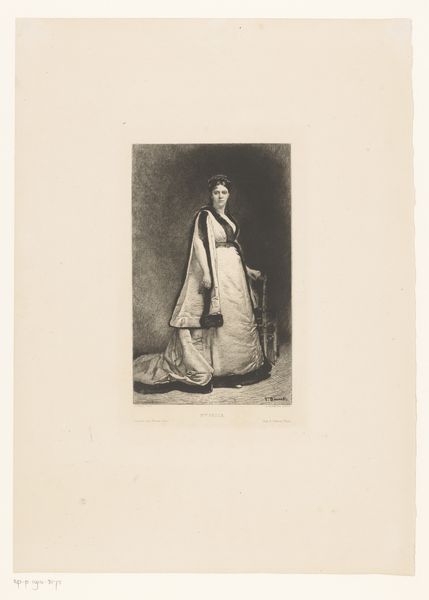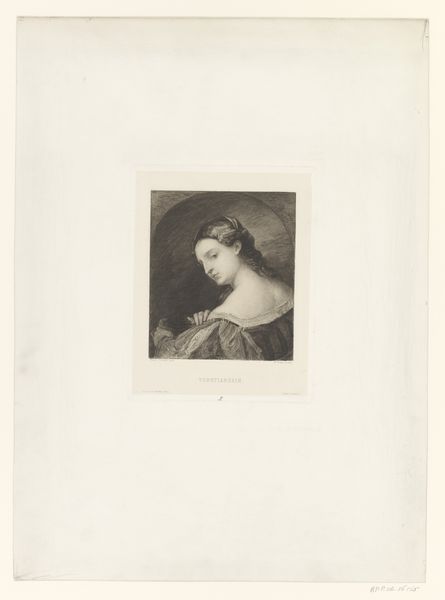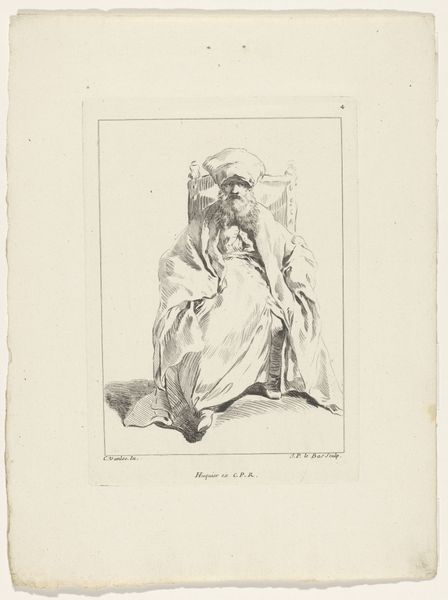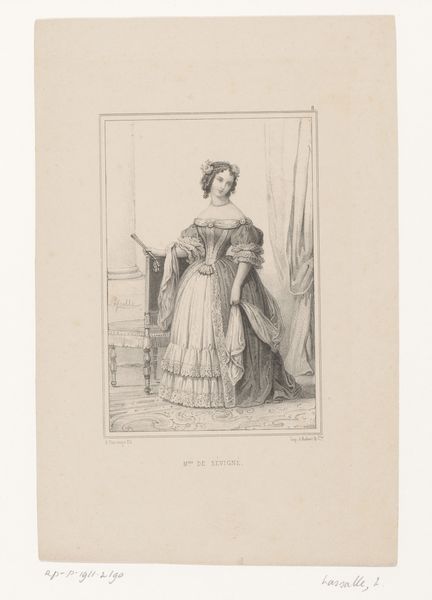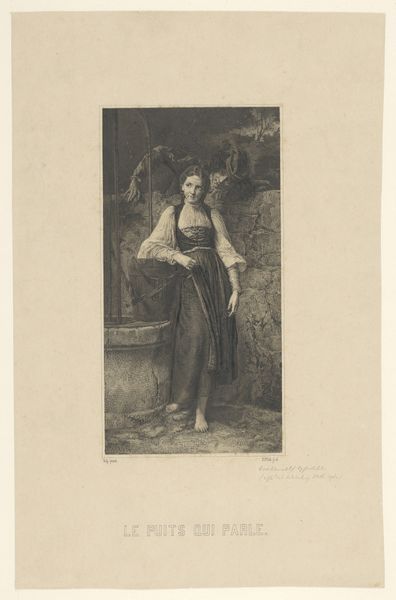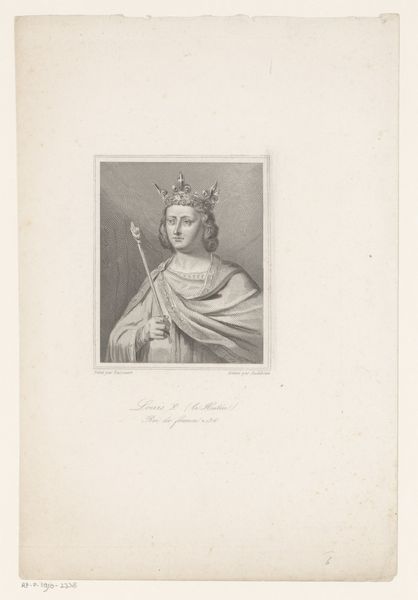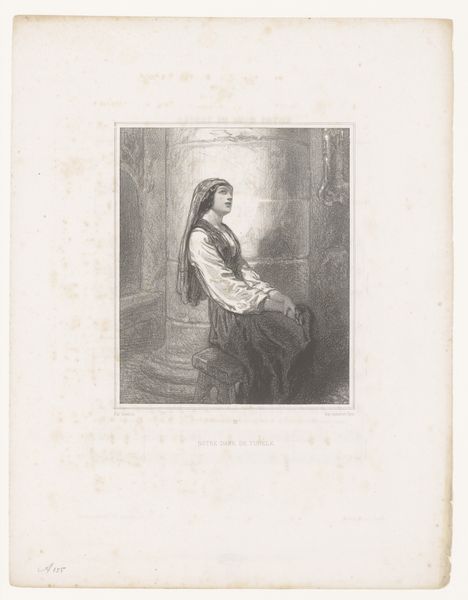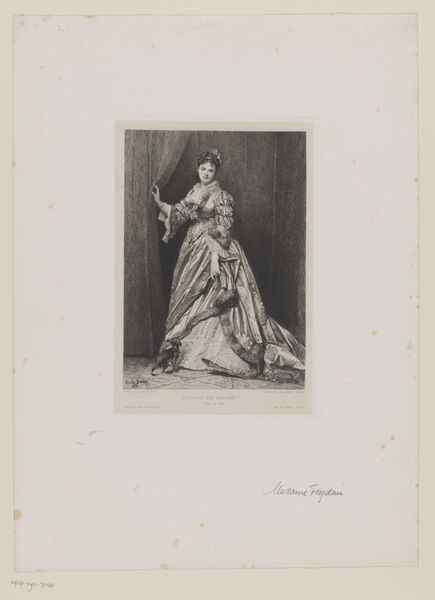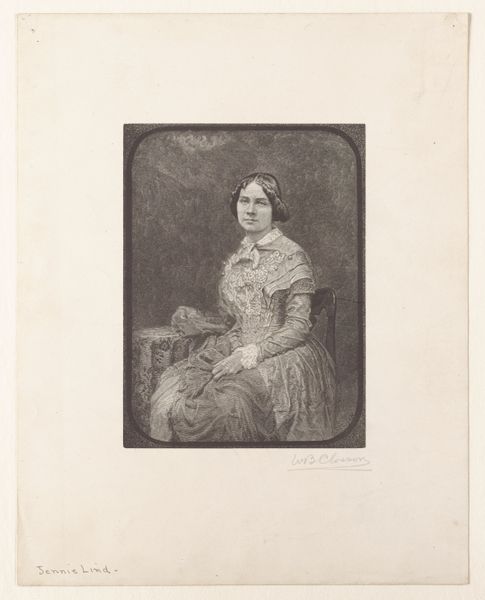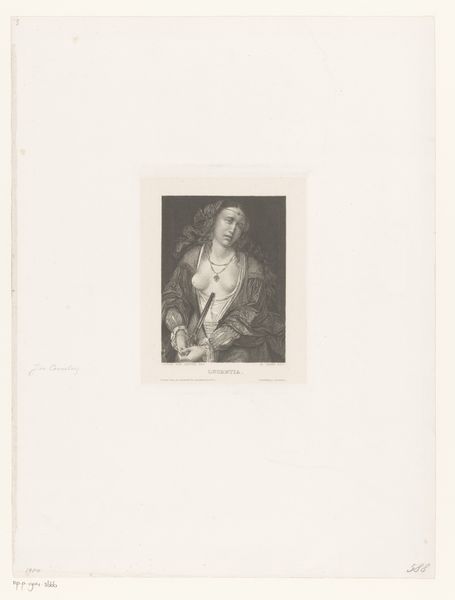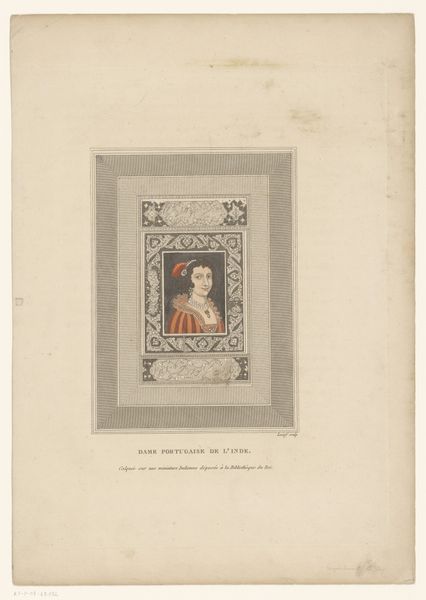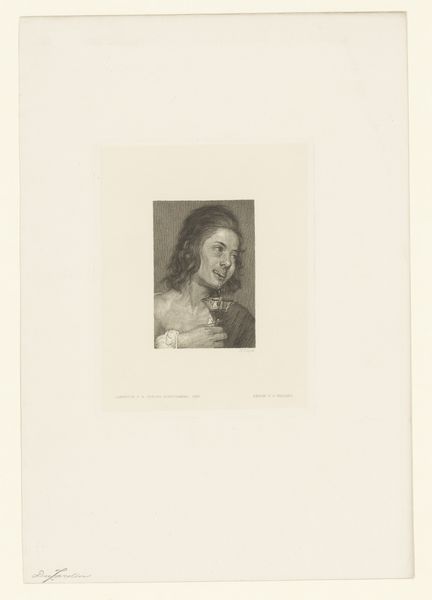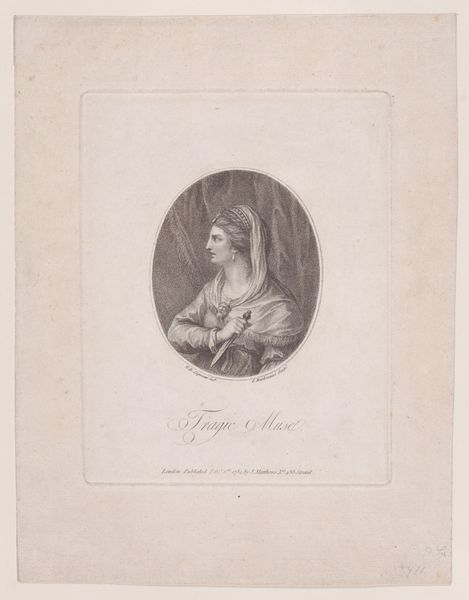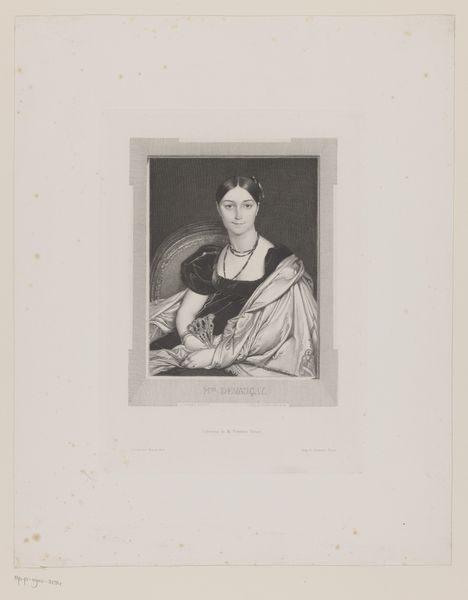
drawing, print, paper, engraving
#
portrait
#
pencil drawn
#
drawing
#
light pencil work
#
ink paper printed
# print
#
pencil sketch
#
figuration
#
paper
#
genre-painting
#
engraving
Dimensions: height 136 mm, width 97 mm
Copyright: Rijks Museum: Open Domain
Editor: We're looking at "Luitspeelster" by Johann Kaspar Eissenhardt, dating from 1834 to 1896. It's a print on paper depicting a woman playing a lute. I'm struck by how delicate the lines are; it gives the whole piece a very gentle feel. What stands out to you in terms of its formal qualities? Curator: The interplay of light and shadow achieved through the engraving is indeed noteworthy. Observe how the artist manipulates line weight and density to articulate form and create spatial depth. Consider, too, the overall composition: a centralized figure balanced by surrounding elements. What structural relationships do you see within this balance? Editor: Well, the woman herself is obviously the focal point, centered and well-lit, while the foliage and background objects frame her. But why this framing – is it to emphasize her? Curator: Precisely. The artist's careful placement directs our gaze, yet simultaneously establishes a dialogue between figure and ground. This intentional manipulation invites us to consider not only the subject, but also the broader visual relationships within the composition. And what of the texture evident within the print itself? Does the medium contribute to or detract from the overall aesthetic? Editor: The texture almost gives it a kind of softness despite the precision of the engraving. I find it very appealing. It definitely seems intentional. Curator: It is precisely such nuanced interplay of medium and subject that warrants close attention. Considering such subtleties allows us to fully appreciate the artistic intention embedded in the artwork. What have you gleaned from our brief interaction? Editor: I never would have thought about texture like that in a print before. It’s shown me that you can derive value from formal features that aren't readily apparent, and apply that analysis across media. Curator: Exactly, we can utilize semiotics to deconstruct meaning. It encourages an enhanced appreciation for the nuances inherent in art.
Comments
No comments
Be the first to comment and join the conversation on the ultimate creative platform.
